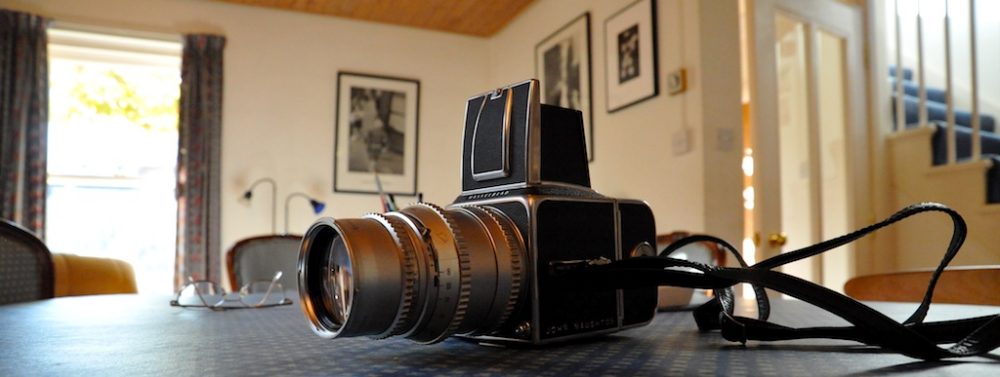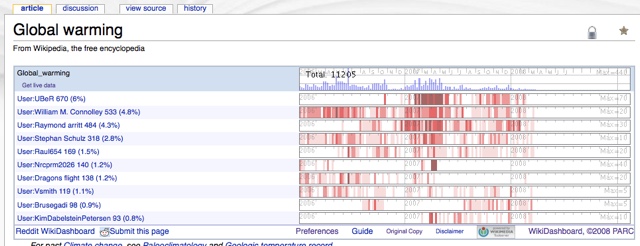Three interesting pieces have appeared recently, each of which sheds light on the seismic changes underway in our media environment.
First of all, Emily Bell had a perceptive column on the TMA (“too much stuff”) syndrome, and the $64 billion question:
How does an industry that has force-fed all manner of output to an audience that can’t digest it draw back? The economic downturn will make this confrontation easier to resolve. The way out is for a narrowing at one end of the distribution pipe – the creation end. Production companies in the UK are now bigger and more powerful than broadcasters, not least because of the over-commissioning spree.
There is as much good television now as there has been for a long time – Iran and the West, The Devil’s Whore, Mad Men, Red Riding – yet it barely has space to breathe. We are moving, probably for all manner of creative content, toward the “iPlayer model”. The number of shop windows and the level of output will drop dramatically with closure and consolidation, but the opportunity to consume will exponentially expand through technology.
Rationally this is something every media business knows, but moving towards it is incredibly painful and often extremely expensive. Not to mention slow. The light at the end of the tunnel is the possibility that, when all of the current attrition is over, there will still be enough revenue from advertising to support the very best of the content. Shrinkage is the new black, even the stylish Lygo can see that. The war against too much stuff has officially begun. The challenge is to make sure we are left, when the gloom lifts, with the right stuff.
Then there was Clay Shirky’s essay (about which I’ve already blogged) in which he highlighted the blind-spot that disables most media discussion about the future of news, namely the failure to distinguish between form and function. What matters is news and journalism, not the survival of one particular form (the newspaper) which — for historical and technological reasons — happened to become the dominant way of fulfilling that function until recently. Journalists are obsessed with the importance of preserving the newspaper, rather than the thing that newspapers existed to produce. This, it seems to me, is a pretty widespread misconception, and it applies to many fields other thn journalism. Libraries, for example. Travel agents. And maybe universities.
Finally, there was Steven Johnson’s speech to the South by Southwest Interactive Conference in Austin. This is another example of trying to take the long view of what’s happening, rather than constantly engaging in panic-stricken extrapolation from short-term trends. One thing I especially liked is that he shares my view that ecological metaphors are the best tools for discussing what’s happening.
The metaphors we use to think about changes in media have a lot to tell us about the particular moment we’re in. McLuhan talked about media as an extension of our central nervous system, and we spent forty years trying to figure out how media was re-wiring our brains. The metaphor you hear now is different, more E.O. Wilson than McLuhan: the ecosystem. I happen to think that this is a useful way of thinking about what’s happening to us now: today’s media is in fact much closer to a real-world ecosystem in the way it circulates information than it is like the old industrial, top-down models of mass media. It’s a much more diverse and interconnected world, a system of flows and feeds – completely different from an assembly line. That complexity is what makes it so interesting, of course, but also what makes it so hard to predict what it’s going to look like in five or ten years. So instead of starting with the future, I propose that we look to the past.
To use that ecosystem metaphor: the state of Mac news in 1987 was a barren desert. Today, it is a thriving rain forest. By almost every important standard, the state of Mac news has vastly improved since 1987: there is more volume, diversity, timeliness, and depth.
I think that steady transformation from desert to jungle may be the single most important trend we should be looking at when we talk about the future of news. Not the future of the news industry, or the print newspaper business: the future of news itself. Because there are really two worst case scenarios that we’re concerned about right now, and it’s important to distinguish between them. There is panic that newspapers are going to disappear as businesses. And then there’s panic that crucial information is going to disappear with them, that we’re going to suffer as culture because newspapers will no long be able to afford to generate the information we’ve relied on for so many years.
When you hear people sound alarms about the future of news, they often gravitate to two key endangered species: war reporters and investigative journalists. Will the bloggers get out of their pajamas and head up the Baghdad bureau? Will they do the kind of relentless shoe-leather detective work that made Woodward and Bernstein household names? These are genuinely important questions, and I think we have good reason to be optimistic about their answers. But you can’t see the reasons for that optimism by looking at the current state of investigative journalism in the blogosphere, because the new ecosystem of investigative journalism is in its infancy. There are dozens of interesting projects being spearheaded by very smart people, some of them nonprofits, some for-profit. But they are seedlings.
So here are some principles for thinking intelligently about our emerging media environment:
Think ecologically
Think long-term. What’s happening might be as profound as what happened after the emergence of print — and look how long it took for those effects to work their way through society.
Don’t confuse existing forms with the functions that they enable. It’s the functions that matter. Forms may be transient, the product of historical or technological circumstances.
Er, that’s it
LATER: Andrew Keen isn’t entirely impressed by the Shirky essay.
But for all the invigorating qualities of Shirky’s prose and ideas, I found the piece to be just a tad depressing. The weakness of his skeptical argument is also its great strength. Since we don’t know the ending to the news business saga, we can’t know for sure if this will have a happy ending. Shirky acknowledges that “many of these models will fail” and that “over time” some of these experiments might “give us the reporting we need”. I’ve bolded and itallicized that “might” because I suspect that Shirky isn’t himself completely convinced that a real solution will emerge. And that’s a depressing thought because a society without journalism isn’t a good society.
And the question that I’d throw back at the laissez-faire Shirky is this: how absolutely should we stand back and trust the free market to come up with a solution to the crisis of the news business? We certainly aren’t trusting this unfettered market to solve Wall Street’s financial crisis. Nor are most Americans happy with a free market in healthcare that has left millions of people without insurance. So if we can agree that the news business, like healthcare and the financial sector, is too important to fail, then shouldn’t the government be taking a more active gardening/watering role in ensuring that at least one or two of today’s digital flowers fully bloom in the future?



